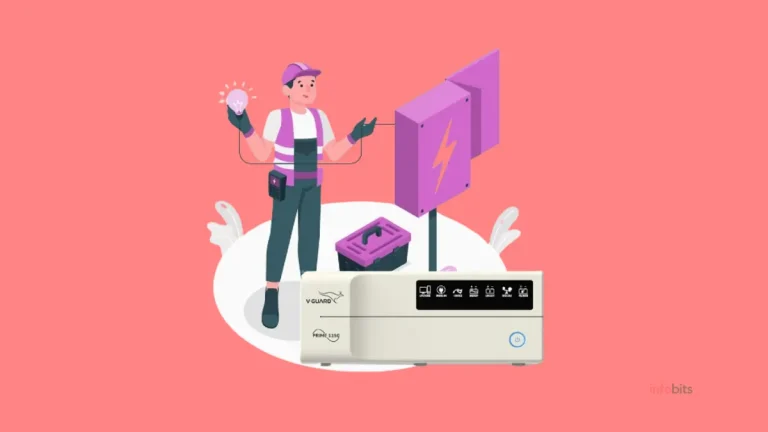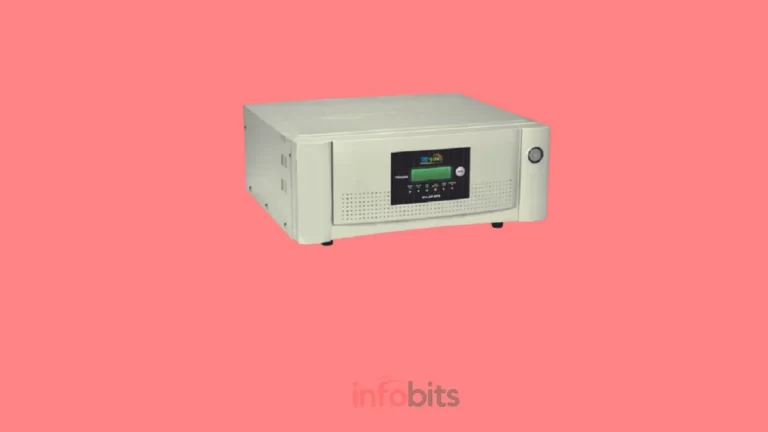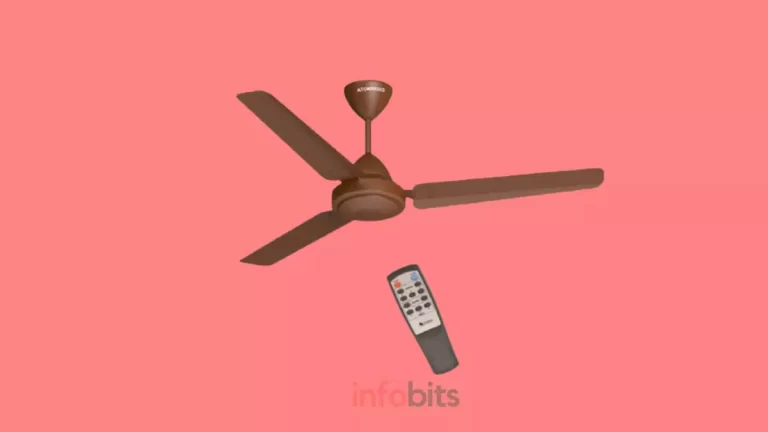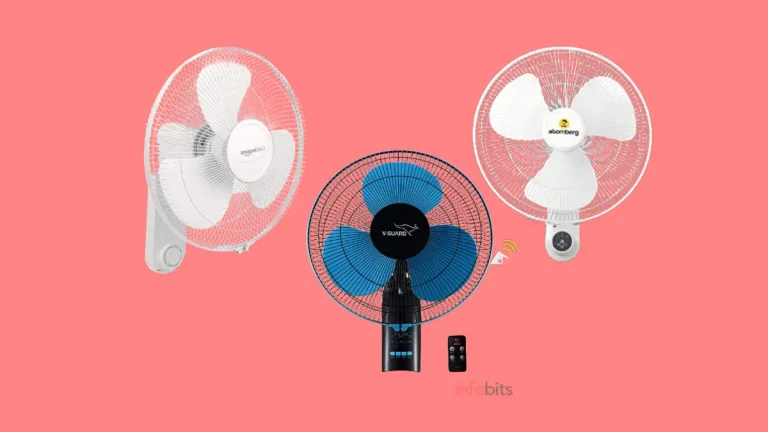Which Type of Room Heater Is Good for Health?
Room heaters became an unavoidable item throughout the winter season due to the freezing low temperatures and icy winds.
We’ve previously compiled a list of some of the top room heaters in India.
However, some people are hesitant to use room heaters because they are concerned that they could create health problems.
As a result, we’d like to address the following concerns in this post.
Is the room heater good for health?
Which type of room heater is good for health?
What are the side effects of room heaters?
Before we can answer these questions, it is worthwhile to understand the various types of room heaters and how they function.
Different Types of Room Heaters And Their Impact on Health
Room heaters operate on a variety of principles and technologies and are available in different pricing ranges.
Typically, the categorization is based on how the heat is spread around the space.
When it comes to heating technologies, there are essentially 3 types of room heaters available. Almost every room heater operates on one of these three heating methods.
The following are the many types of room heaters based on the technology used.
1. Convection Heaters
Convection heaters operate on the principle of heating the space by convection technology, which employs a coil or a panel for heating.
This heating element is heated up when electricity is allowed to pass through it. A fan or blower is directed toward the heating element, which distributes warm air throughout the whole space.
These room heaters diffuse heat from a metallic coil which glows when it is heated up electrically. First, the closest regions are heated, and the heat is then conducted to other sections of the room.
Fan heaters, often known as blower heaters, are a form of convection or convector heater.
Convector heaters are an excellent alternative if you need a temporary heating source to warm up a space for a few hours. They take a bit longer to heat up, but they can be easily regulated with a timer and thermostat, preventing overheating and saving money.
The ceramic core of these convection and conduction heaters is an incredibly hot metal rod. As the ceramic core heats up, the surrounding environment warms.
Meanwhile, the ceramic core rod dries out the air in the space by decreasing the moisture content.
While they are excellent in warming bigger rooms, convection heaters can also produce dryness and a reduction in moisture levels. This might cause dry skin, nasal irritation, and other respiratory problems.
Additionally, the ambient air oxygen content is burned out.
That is, the air you breathe when you are using your room heater having a burning heating element in a closed room is rather dry and has very little oxygen, which has many detrimental effects on your health.
To reduce these hazards, use a humidifier in conjunction with a convection heater to keep a healthy amount of moisture in the air.
2. Radiant Heaters
These are the heaters that function by emitting electromagnetic waves. Infrared radiation is commonly employed in these sorts of heaters, and hence they are also called infrared heaters.
These rays emit heat straight to the surfaces on which they fall, providing the warmth that is necessary for the space.
Radiant heaters are ideal for providing a short burst of warmth or more targeted heating. These heat only what is in front of them and are excellent if you want to warm up only a portion of a room for a short length of time.
They do not create a uniform degree of heat across the room, unlike convector heaters, and so do not always provide the same level of comfort over time.
They seldom feature thermostats or timers, which might raise their operating expenses over time.
They retain a greater humidity level since they do not rely on air circulation, which is helpful to our skin and respiratory system.
3. Oil Filled Heaters
Oil-filled heaters contain oil that warms up and radiates heat. They deliver consistent and even heat, making them energy-efficient.
However, they might take longer to properly warm up a space than other types of heaters.
Oil-filled heaters are typically safe for health because they do not immediately alter air quality or moisture levels.
They don’t create flames or emit hazardous fumes, making them a safer alternative for people who have respiratory problems or allergies.
Just keep them away from combustible materials and don’t leave them alone – remember, safety first!
Side Effects of Room Heaters
As we have seen in the previous discussions, most room heaters are hazardous to one’s health, particularly those with exposed heating elements.
The following are significant health-related issues of using room heaters.
a) Room Heaters May Emit Toxic Gases
Nowadays most people are using electric room heaters. There are several types of space heaters available on the market today. But don’t forget that fewer people are still using conventional fuel-burning heaters in several parts of India.
These fuel-burning heaters produce carbon monoxide when they run on oil, gas, petroleum, or charcoal. Some of these heaters are vented and have a chimney to aid in the expulsion of fumes.
If this vent can be directed outdoors, you can keep the inside air clean and fresh. Otherwise, it continues to emit combustion products into the room. In an enclosed location, contaminants from burning can be hazardous.
Also, you should note that whenever burning occurs there is a lot of carbon monoxide is produced as a by-product. It applies to some electric heaters that use deep-burn heating elements.
Carbon monoxide is extremely harmful since it cannot be seen or smelled. When you breathe in carbon monoxide, it further reduces the oxygen level in your blood. It will cause you to lose consciousness or even produce suffocation if your body does not receive enough oxygen.
Carbon monoxide-emitting space heaters are not intended for indoor use and they might always bear a prominent warning about this. Long-term exposure to toxic gases can harm your brain and heart too. It may raise the risk of asthma or other respiratory disorders.
When compared to outside air, nitrogen dioxide (NO2) and carbon monoxide (CO) levels in the residence rise when gas-fired heaters (LPG heaters) are in use.
Our respiratory system can have problems with even small amounts of NO2 like carbon monoxide for a short time.
Children who live in homes with LPG heaters are at a higher risk of developing asthma, as well as lung damage, coughing, sneezing, and wheezing. Elderly people and small children are particularly sensitive to the carbon monoxide emitted by these heaters.
b) Room Heaters Result in Dry Air
The heating element of the room heater evaporates and dries the water content in the air.
This dry air can irritate your sinuses, dry up your lips and skin, and create other unpleasant symptoms such as nosebleeds and rashes. I
f your skin is sensitive, it may become irritated and red. They can also dry up your eyes, making it difficult to see well after a while.
To some extent, the dryness of the air may be compensated for by using a humidifier or keeping a bowl of water in one part of the room to provide a consistent amount of moisture in the air.
When using this sort of room heater, try to apply moisturizing lotion to your skin and drink enough water.
c) Oxygen Burning
A heating element with deep burning capacities, such as those used in some fan heaters and infrared heaters, uses oxygen for burning purposes, reducing the amount of oxygen in the room.
The lack of sufficient oxygen in the environment may result in symptoms such as headaches, nausea, and difficulty sleeping.
The window should be slightly open rather than closed to maintain the oxygen level and allow for fresh air movement.
PTC (Positive Temperature Coefficient) heating elements, which are utilized in contemporary heaters, do not burn oxygen. You should consider getting these types of room heaters.
d) Difficulty with Temperature Changes
We prefer to sit in warm environments offered by room heaters throughout the winter season.
But as soon as we leave the warm environment, we feel cold. In other words, our body temperature fluctuates rapidly.
Our immune systems will be weakened as a result of the frequent sudden changes in our body temperature, which might lead to several diseases.
What to Know When Using a Room Heater?
Never use a space heater to replace your heating ventilation, or air conditioning system. It should only be used as a temporary heat source to warm up tiny spaces when no other choice is available.
If you use a space heater temporarily, be sure that the model you are using is safe for indoor usage. There will be something on the label that says this; if you can’t find it, buy a different heater that does.
Choose a power circuit with RCCB and MCB protection to plug the room heater into and restrict the use of other high-current products hooked into the same electrical circuit, such as hairdryers and other heavy kitchen appliances.
Dust, clean, and clear a big area around the heater, and set it on a sturdy, non-burnable surface, such as stone or tile, rather than wood or carpet.
Keep it close to the ground, not high up on combustible furniture.
If you have children or pets, consider installing a 3-6 foot protection fence around it. To guarantee permanent safety, follow any extra recommendations provided by the manufacturer.
Which Type of Room Heater Is Good for Health?
Oil-filled room heaters are recognized as safe and beneficial to health.
It is a conduction kind of heater. It is filled with diathermic oil but without a fan or rod.
Here the heating element is used to heat the oil and not the air directly. As the oil within it heats, so does the air around it.
In other words, the diathermic oil absorbs the heat generated by the electricity and releases it into the room via fins and columns.
It is not necessary to refill the oil in it. The filled oil is heated repeatedly and utilized for an extended period.
Because oil-filled heaters do not reduce the amount of moisture in the room’s air, there is no nasal blockage or a feeling of dryness in the eyes, skin, throat, or nose.
It lacks a direct contact heating element with the air and instead warms the oil to keep the oxygen in the room from burning.
Advantages of Oil-Filled Heater
- Less maintenance and may be left unattended
- PTC heating elements are used which do not burn the oxygen in the room
- High energy efficiency as compared to other types of heaters.
- Even after being shut off, it retains heat for an extended time.
- Ideal for large rooms and spaces.
- There is no fan, thus there is no noise.
- Suitable for operation for a long time.
- Because the surface of an oil-filled room heater does not heat up, they are safe for children and dogs.
- Its lifespan is longer than other types of heaters.
Conclusion
When shopping for a room heater, look for an oil-filled radiator heater with a PTC element.
Even though they are more expensive than standard fan heaters, they will benefit you for a long time, both financially and health-wise.
However, if you only need a room heater for a short period and have a limited budget, you can choose a high-quality indoor fan heater.
It is critical to focus not just on warmth but also on your health and well-being when choosing the proper room heater for your house.
Throughout this article, we’ve looked at many types of room heaters and their effects on indoor air quality and general health.
In light of your health demands and preferences, it is important to evaluate aspects such as convection heaters, radiant heaters, oil-filled heaters, ceramic heaters, and infrared heaters.
You can create a warm and pleasant living area while also ensuring that your room heater fosters a healthy atmosphere by making an informed decision.
When selecting a room heater for your house, remember to consider both warmth and health.
Related: Best Room Heater in India | How to Select a Good Room Heater?
Frequently Asked Questions
While the effects of different types of room heaters on health vary, it is crucial to recognize that all room heaters have particular safety implications. To reduce any potential health concerns linked with room heaters, it is critical to follow the manufacturer’s recommendations, maintain sufficient ventilation, and guarantee frequent cleaning and maintenance.
Radiant heaters are frequently seen as a healthier alternative since they focus heat on objects and people without adversely influencing air quality or humidity levels. To minimize overheating or dehydration, provide enough ventilation and avoid extended exposure to direct heat.
Ceramic heaters are typically regarded as safe and effective heating devices. They do not generate fumes or burn oxygen, making them a good choice for people who have respiratory issues. To minimize mishaps, it is still necessary to guarantee appropriate ventilation and avoid placing combustible materials near the heater.
Room heaters have no direct effect on indoor air quality. Certain heaters, such as infrared or radiant heaters, do not circulate air and hence do not circulate allergens or dust particles. It is advised to utilize air purifiers or maintain sufficient ventilation in conjunction with room heaters to enhance indoor air quality.
Subscribe to our free newsletter so that you will get regular updates, informational ebooks, and the latest deals & offers directly in your Email.
Disclosure: We will get an affiliate commission on some, but not all, of the items or services we recommend if you follow our links to a retailer’s website and make a purchase.
You May Be Interested to Read:
- Why Does RCCB Trip When Lightning Strikes?
- Best Room Heater in India | How to Select a Good Room Heater?
- Best 3 Litre Geysers in India | How to Select a Best 3l Instant Water Heater?
- Best Wall Fans in India | How to Select a Good Wall Fan?
- Best Ceiling Fans In India Under 1500
- BLDC Fan vs. Normal Fan | Why Do We Need to Use BLDC Fans?







